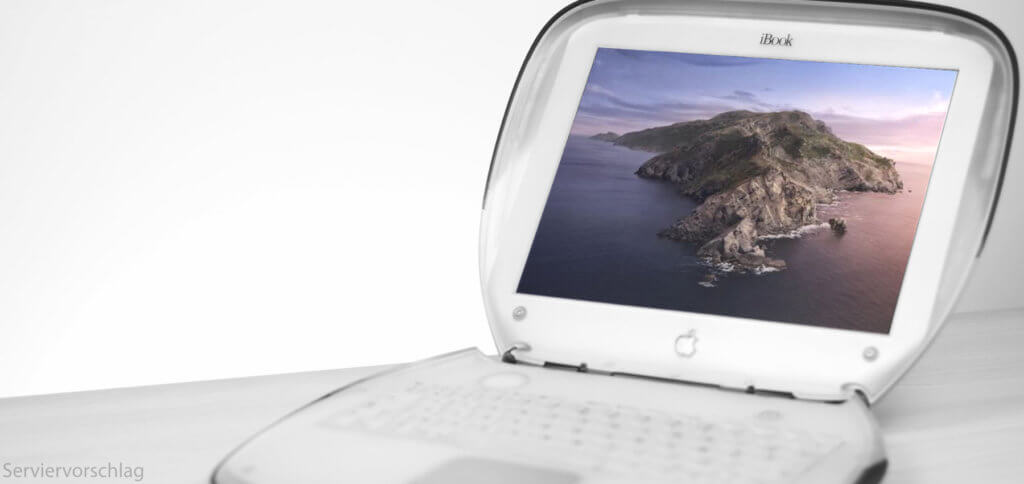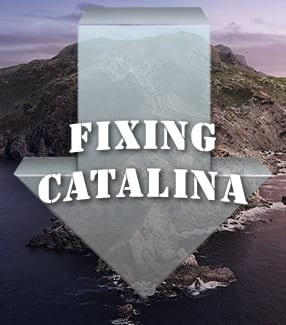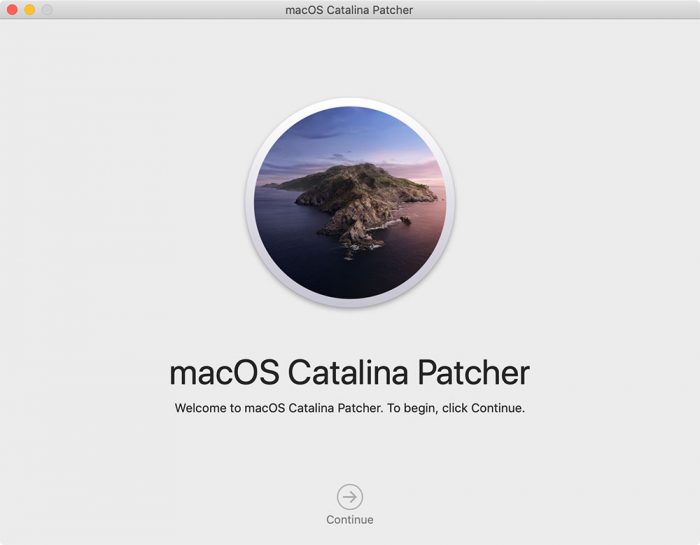- Dosdude Mac Os Catalina
- Dosdude1 Macos Catalina Release
- Dosdude1 Macos Catalina Free
- Are There Any Problems With Macos Catalina
- Dosdude1 Macos Catalina Download
- On the surface, the macOS Catalina installer appears to copy the operating system files to the startup disk of your Mac. But dig a little deeper and you may realize that it actually splits your boot volume into two distinct components, named Startup and Data.
- I updated an older MacBook to Catalina 10.15.2 from 10.13 High Sierra using the dosdude patch. I’m finding that my Mac says it’s up to date on 10.15.2. It will not update to 10.15.3.
- Make your old Mac support macOS Catalina. Older Mac owners don’t have to worry. It’s not the end of the world. There’s a patch that lets you install Catalina to Macs that are not officially supported. The patch is known as DosDude Catalina Patcher. DosDude Catalina Patcher is a third-party tool, meaning Apple does not develop the tool.
Previously, Dosdude, did an excellent job for running macOS on unsupported Macs. From macOS Sierra to Catalina. As there's no any work for macOS Big Sur from Dosdude, a thread is available by him which is linked below. Dosdude1's Personal Web Server. My name is Collin. I do practically anything related to computers and electronics, including programming, repairing devices, and circuit/PCB design. I specialize in component-level board repair on Apple Macintosh computers, and programming for both macOS and iOS platforms.
Downgrade Catalina to Mojave
If you’ve installed macOS Catalina and run into problems with some of your apps, or you’ve just decided that you don’t like it as much as Mojave, the good news is that you can downgrade back to the previous version of macOS. The bad news is that it’s a lengthy process with several steps. Read on to find out how to do it.
1. Back up your Mac
You should have backed up your Mac before you upgraded to Catalina, as you should before you perform any major upgrade or make any significant change to your Mac. However, the files you’ve been working on since you upgraded won’t be up to date on that backup. So, you should copy those files to an external disk, or a cloud storage service like Dropbox or iCloud Drive so you can retrieve them easily when you downgrade. We’re going to completely erase your Mac’s startup disk, so it’s important to copy anything you need now.
Before you backup, however, you should take steps to remove the junk and clutter from your Mac. There’s no point in backing up all the clutter along with the files you really need. To do that, I recommend CleanMyMac X. It’s the easiest way to clear out the clutter on your Mac. Here are just a few things it can do:
- Delete years worth of system junk
- Find hidden apps and folders
- Neutralize Mac-specific malware, like key loggers
- Manage hung apps and heavy CPU consumers
- Update all your software to the latest-supported versions
As you can see, CleanMyMac X does a lot more than just clear out junk files before you backup your Mac. It’s well-worth keeping it on your Mac and using regularly to keep your Mac running smoothly.
2. Save your passwords
When you downgrade mac OS Catalina, you’ll delete everything from your hard drive, including licence keys and settings. So, in addition to making sure you copy all the files that have changed since you last backed up, you should make a note of those. If you use a password manager that syncs with other devices and allows you to store licence codes and encrypted notes, you could use that. If not, any app that allows you to sync encrypted notes will do. Or you can use Apple’s Notes app. It’s also a good idea to take screen grabs of settings to make it easier to restore them later. Remember to copy the grabs to a cloud storage service or an external disk.
3. Create a bootable installer of macOS Mojave
Note, you can skip this step if your Mac shipped with macOS Mojave or if you made a backup with Time Machine before you upgraded to Catalina.
- If you’re reading this before macOS Catalina ships, you can go to the App Store and search for Mojave, then download it. If it tries to install when it’s finished downloading, quite the installer.
- If you’re reading this after Catalina ships, you can download Mojave here, but only on a Mac that’s not already running Mojave. When you click that link, Software Update will launch and start to download Mojave. When it’s finished, quit Software Update.
- Grab a USB stick with 16GB capacity or an external hard drive or SSD and plug it in to your Mac.
- Launch Disk Utilities and Erase the Drive or USB stick, formatting it as Mac OS Extended (Journaled) and selecting GUID partition map if a selection is available.
- The easiest way to create a bootable installer is to use DiskMaker X. However, you can also do it in Terminal like this:
- Launch Terminal from Applications - Utilities
- Type:
sudo /Applications/Install macOS Mojave.app/Contents/Resources/createinstallmedia --volume /Volumes/Untitledwhere ‘Untitled’ is the name of your USB stick or external hard drive - Press Return and wait for the word Done to appear in Terminal.
Whichever method you used, you should now have a bootable macOS Mojave installer. Keep it safe.
4. Uninstall macOS Catalina
- Make sure your Mac is connected to the internet.
- Click on the Apple menu and choose Restart.
- Hold down Command+R to boot into Recovery mode.
- Choose Disk Utility in the macOS Utilities window
- Select your startup disk
- Choose Erase
- Quit Disk Utility
How to downgrade Catalina to Mojave if your Mac shipped with Mojave
- Once you’ve erased your startup disk and quit Disk Utility as described above, choose Reinstall macOS from macOS Utilities.
- Press Continue.
How to rollback from Catalina using a Time Machine backup
If you backed up your Mac with Time Machine before you installed Catalina, you don’t need to create a bootable installer – you can just reinstall Mojave from your Time Machine backup. Make sure it’s plugged in if it’s an external disk. If it’s a network disk, make sure you’re connected to the network.
- Once you’ve erased your start up disk as described above, choose Restore from Time Machine backup in the macOS Utilities window.
- If your backup is on an external disk, select it. If it’s on a network disk, select it and choose Connect to Remote Disk.
- Type in your username and password for the remote disk if necessary.
- Select the data and time of the backup you want to restore from.
- Follow the onscreen instructions.
5. Install Mojave using a bootable installer
If you have a Mac that didn’t ship with Mojave and you don’t use Time Machine to backup, you’ll need to reinstall Mojave from the bootable installer we created earlier.
- Plug in the installer disk.
- Go to the Apple menu and choose restart, then hold down the Option key.
- Mojave will start installing on your Mac.
- When it’s finished, your Mac will restart and the Setup Assistant will appear
- Follow the steps in the SetUp Assistant to set up Mojave
Restore your settings
If you have reinstalled Mojave from a bootable disk, rather than a Time Machine backup, you will need to reinstall applications and copy documents across from your backup. That’s where those notes and screen shots you made earlier come in handy!
Once you’ve restored your settings and reinstalled all the apps you need, your Mac is ready to use again, running Mojave instead of Catalina.
Tip: If you want to roll back to an earlier version of macOS than Mojave, you can. To reinstall the OS your Mac shipped with, use the method in ‘How to downgrade if your Mac shipped with Mojave’. If you want to roll back to a version of macOS newer than the one your Mac shipped with but older than Mojave, you can download Sierra and earlier versions from the Mac App Store. Then follow from Step 3 in ‘Create a bootable installer of Mojave’.
My Mac is still underperforming, what to do?
You thought that reverting to macOS Mojave would get your Mac back to norm. But if it didn’t and you still experiencing sudden freeze-ups and glitches, full disk cleanup is your answer. Probably there are too many conflicting system junk files on your drive that you need to plow through.
You don’t need a regular disk cleanup app — most of them are scam — but this tool, CleanMyMac X, is notarized by Apple, and can really do helpful optimizations on your Mac.
- Download the free edition here
- Go to Maintenance tab
Now you can perform some of the tasks suggested by the app, like running Maintenance Scripts. Also, check the System Junk tab and remove all the useless files it recommends you to delete.
As you can see, it is possible to uninstall Catalina if you decide you don’t want to continue using it. It’s essential, however, that you backup your Mac before you upgrade. And remember, before you backup, clear out the clutter with CleanMyMac X. That way you won’t use precious space on your backup drive copying over junk files.
In this post, we will learn How to Install macOS Catalina on Unsupported Mac. macOS Catalina is the most innovative variant of the macOS that came within our palms on October 7, 2019. The debut of Catalina occurred in WWDC 2019. The general public beta of macOS Catalina was outside afterward in July 2019. Apple introduced Catalina with amazing features and amazing wallpapers by describing macOS Catalina is a great listener, and she can know you better than anyone. Catalina additionally has a Time-Shifting desktop, which turns light into dark or dark to light based on your time zone.
Here is how to Install macOS Catalina on Unsupported Mac.
Some helpful links:
How to Speed Up macOS Catalina? 7 Easy Methods
How To Download Macos Catalina Vmware & Virtualbox Image – Latest Version
Download macOS Big Sur VMware & VirtualBox Image – Latest Version
How to share folders on VirtualBox & Vmware? (Windows-MAC) Step by Step Guide
macOS Catalina
Catalina’s complete variant was down to October 7th, 2019. Once Catalina was totally out, there were lots of new things and also as many problems. I personally utilize macOS Catalina, and I enjoy it very much and don’t have any issue with it, except it is difficult to locate things. But, there are lots of features and updates I haven’t still touched off.
With the support of Catalyst, you can use macOS and iPadOS simultaneously. Apple has made so many new updates and features that let us edit our photos and videos like a pro editor. Many people adore Catalina, and people like to utilize macOS Catalina not merely by Mac consumers but also by Windows and other operating platform users. Within the following guide, I will demonstrate how to Install macOS Catalina on Unsupported Mac.
The most recent upgrades happened in macOS Catalina on March 24, 2020. Because of this upgrade, changes came into Screen Time Communication Limits, a characteristic brought to the iPhone in the iOS 13.3 upgrade, it includes iCloud Folder Sharing, and it brings a fresh Head Pointer Access option that enables the cursor to be controlled together with head movements using Mac’s camera. We’ll find out how to Install macOS Catalina on Unsupported Mac.
How To Install macOS Big Sur On VMware On Windows?
How To Install macOS Big Sur On VirtualBox On Windows?
How to Speed Up macOS Catalina? 7 Easy Methods
Is your mac in Your Unsupported List?
macOS Catalina is amazing, but when users can not utilize it, then it makes no sense to know it. From a while ago, Apple was cutting and creating the harmonious Macs list bigger for their new variants, and this list can be applied to Catalina. As Apple is rolling more versions, they are cutting more old Macs from the list. The list of jobless Mac is getting larger and is already too large. Maybe that is because Apple needs more users to buy their brand new products rather than using their older ones.
Considering that the list of unsupported Macs has increased now, some run Mojave users can not set up macOS Catalina. Based on Apple, they said, we’re decreasing the amount of Mac supports because old Macs don’t have enough capacity and metallic graphics processors. Based on Apple, they stated, we are accountable for all of the older mac users that can’t encounter MacOS Catalina within their Mac. Not everyone can afford to have a new Mac every year, and Macs aren’t cheap also. Don’t worry. We’re likely to show you how you can install macOS Catalina on unsupported Mac.
Before heading to Install macOS Catalina on Unsupported Mac, check out the unsupported collection of all Macs and if your Mac is from the unsupported list.
Here are the list of unsupported Mac.
Early-2008 or newer Mac Pro, iMac, or MacBook Pro:
MacPro3,1
MacPro4,1
MacPro5,1
iMac8,1
iMac9,1
iMac10,x
iMac11,x (systems using AMD Radeon HD 5xxx and 6xxx series GPUs will likely soon be almost unusable when conducting Catalina.)
IMac12,x (systems with AMD Radeon HD 5xxx and 6xxx series GPUs will likely soon be nearly unusable when conducting Catalina.)
MacBookPro4,1
MacBookPro5,x
MacBookPro6,x
MacBookPro7,x
MacBookPro8,x
Late-2008 or newer MacBook Air or Aluminum Unibody MacBook:
MacBookAir2,1
MacBookAir3,x
MacBookAir4,x
MacBook5,1
Early-2009 or newer Mac Mini or snowy MacBook:
Macmini3,1
Macmini4,1
Macmini5,x (systems using AMD Radeon HD 6xxx series GPUs will probably be almost unusable when running Catalina.)
MacBook5,2
MacBook6,1
MacBook7,1
Early-2008 or newer Xserve:
Xserve2,1
Xserve3,1
When you have checked and found out your Mac is on the unsupported list, measure to the next step, which is to Install macOS Catalina on Unsupported Mac.
Install macOS Catalina on Unsupported Mac: What We Need?
Before you proceed forward, here are the things you’ll need for this particular process.
16GB USB Drive
DosDude Catalina Patcher
macOS Catalina File
Backup Mac
Once that’s with you, let’s dive into the best and easiest way to Install macOS Catalina on Unsupported Mac.
Backup Your Mac
Before installing any operating system, you must choose to backup your computer fully. We recommend backing up your apparatus. If anything else goes wrong and you hadn’t backed up your apparatus, everything will be deleted. However, if you’d backed up your device, you can restore that. Here are the measures.
First, in the event you wish to replicate, Time Machine Backup can allow you to get it done without deleting some of your folders.
Connect an external hard disk or a USB having a small space.

On the top left corner of your display, click the Apple icon. Proceed to the dropdown menu and Choose System Preference.
By clicking Time Machine, you can earn a machine that will back up your device.
Choose your copy and click Backup.
With that completed, we’ll start the procedure and how to Install macOS Catalina on Unsupported Mac.
How To Install macOS Catalina on Unsupported Mac
After checking your Mac, if your Mac is in the brand new list, installing macOS Catalina marginally with no tool and measures is possible. If your Mac is unsupported, follow the steps below.
Once the application is there, open it. Click Continue.
macOS Catalina Patcher
That being said, if you have the macOS Catalina copy, click Browse to get a backup. If you don’t, pick Download a copy.
macOS Installer App
With this window, click Start Download.
Download macOS
Once it’s finished, insert the USB and click on ”Create a Bootable Installer.”
Setup System
Let the process finish and once it’s done, take out the USB. After a few minutes, then insert the USB again, then reboot into the Mac.

When powering on, hold the Option key for a while until the startup manager appears. Following the Startup Manager opens, click on the USB Drive with the Aid of arrow keys.
Within this stage, choose Disk Utility and then click Continue.
macOS Utilities
If you have completed the previous steps correctly, you’re now in the Disk Utility window. To format your inner drive with APFS format, select the drive, and click Erase. When you’re done, close the window.
Erase Disk
Dosdude Mac Os Catalina
Wait for the window and choose Reinstall macOS to initiate the setup.
macOS Utilities
Click Continue with the straightforward installation wizard and also about the install window, then choose the appropriate disk and click on Install. It might require some while. And you will observe many orders going up and down.
Click on the Force Cache Rebuild option and click on Restart.
Welcome
By this step, you will see macOS Catalina Setup running on your Mac.
After the installation process is done, you want to shut down your Mac and insert the USB drive for booting up your PC. We’re doing this step to verify patches.
Now you’re totally done with all the settings and what. We have installed the most recent version of macOS booted in an unsupported device.
How to Install macOS Catalina on Unsupported Mac: Conclusion
Dosdude1 Macos Catalina Release
The installation procedure may be hard, but it is painless. If you face any issues installing macOS Catalina on an Unsupported Mac. Feel free to comment down below.
Dosdude1 Macos Catalina Free

Here are some- Common macOS Catalina Problems and Solutions: 11 Key Errors and their Fix
Are There Any Problems With Macos Catalina
Incoming Links:
Dosdude1 Macos Catalina Download
Install macOS Catalina on Unsupported Mac, How to Install macOS Catalina on Unsupported Mac, Install macOS on Unsupported Mac, How to Install macOS on Unsupported Mac, macOS Catalina on Unsupported Mac